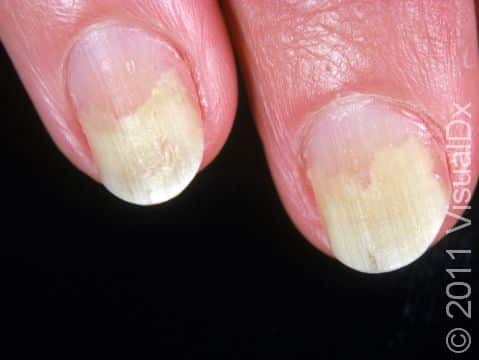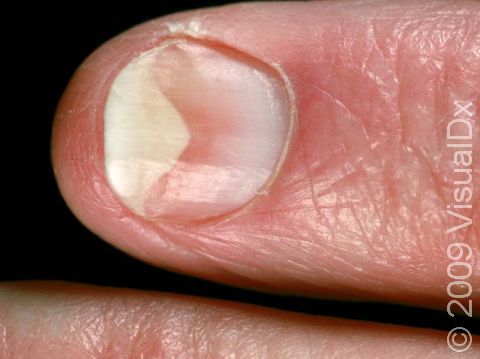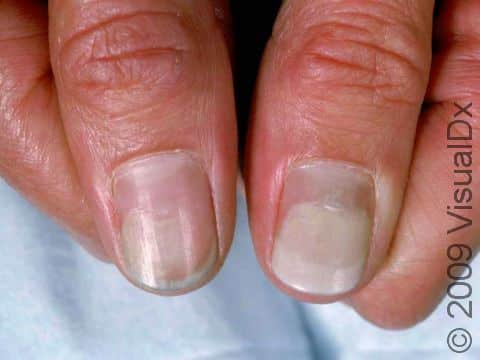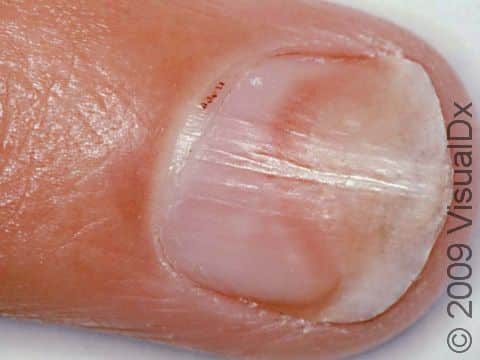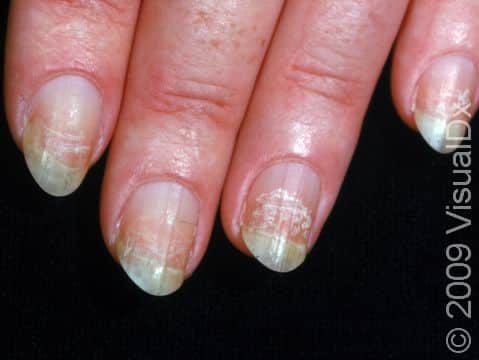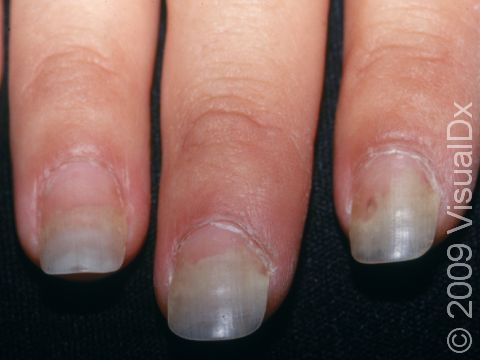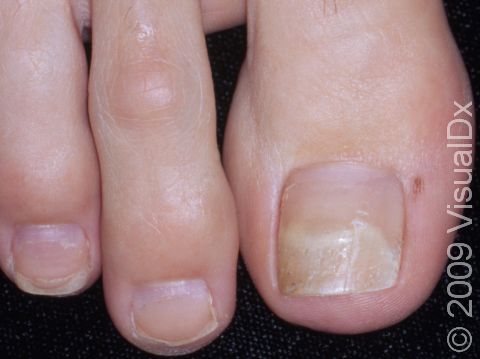Nail Lifting (Onycholysis)
Onycholysis, or nail lifting, is the separation of the fingernail or toenail from the nail bed. Nail lifting creates space under the nail that gathers dirt and debris. When water gets under the nail, bacteria and yeast can cause the area to become infected.
Nail lifting is most often caused by some sort of injury to the nail. The portion of the nail that has separated from the nail bed cannot reattach itself, so the goal is to allow new healthy nail growth, which may take several months.
Who's At Risk?
Nail lifting may affect people of any age. Women are affected more frequently than men. Additionally, nail lifting is common in people who are pregnant and in those who have certain medical conditions, such as eczema (including hand dermatitis), psoriasis, lichen planus, thyroid disease, some forms of infection (eg, bacterial, fungal), and rarely some forms of cancer. Others at risk include people on certain medications, such as oral contraceptives, chemotherapy drugs, and drugs made from vitamin A (eg, retinoids). Finally, people who use harsh nail products such as nail polish remover and artificial nails are prone to nail lifting.
Signs & Symptoms
Nail lifting can occur with fingernails and toenails. The nail separates from the end farthest from the base of the nail and/or the sides of the nail bed and may even separate completely from the nail bed.
Self-Care Guidelines
- Clip away as much of the detached nail as possible, repeating this weekly.
- Gently wash the nail and surrounding skin with plain soap or a mild cleanser and water once daily, rinsing carefully, and then drying the area.
- Try to keep the nail bed dry, such as by wearing rubber gloves while dishwashing, etc.
- In the case of fingernail lifting, avoid using harsh products on the fingernails that may be causing the nail lifting, such as artificial nails.
- In the case of toenail lifting, make sure you wear shoes that fit well (ie, shoes that are not too tight).
- Applying an adhesive bandage to cover the nail can help prevent it from catching on things and worsening the condition.
Treatments
Your medical professional will first want to determine the underlying cause of your nail lifting. Depending on the cause, the medical professional may prescribe treatment for any skin conditions, medical problems, or exposures that may be causing your nail lifting.
If a bacterial or fungal infection is present, your medical professional can prescribe appropriate antibacterial or antifungal treatment.
Visit Urgency
If you suspect the nail lifting may be caused by an underlying medical condition or medication, see a medical professional to help identify and treat the condition or determine if another medication may be substituted.
Trusted Links
References
Bolognia J, Schaffer JV, Cerroni L. Dermatology. 4th ed. Philadelphia, PA: Elsevier; 2018.
James WD, Elston D, Treat JR, Rosenbach MA. Andrew’s Diseases of the Skin. 13th ed. Philadelphia, PA: Elsevier; 2019.
Kang S, Amagai M, Bruckner AL, et al. Fitzpatrick’s Dermatology. 9th ed. New York, NY: McGraw-Hill Education; 2019.
Last modified on June 18th, 2024 at 10:23 am

Not sure what to look for?
Try our new Rash and Skin Condition Finder
